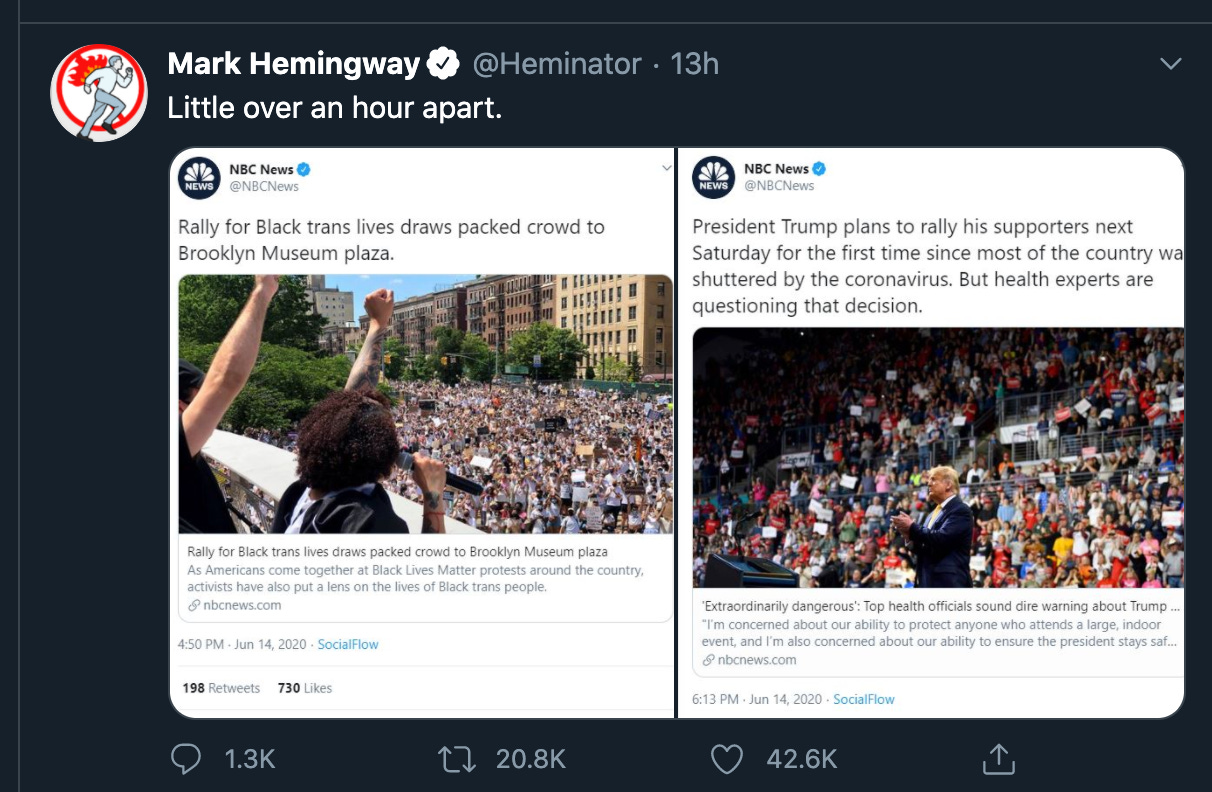The fairness trap
Political journalists are in danger of making the same mistake with coronavirus science as they made with climate science.

A viral tweet comparing NBC’s coverage of two stories: a civil rights protest in Brooklyn this weekend, and President Trump’s planned rally in Tulsa, Oklahoma on Saturday. It implies NBC was being biased by calling Trump’s event “dangerous,” and not the protests.

